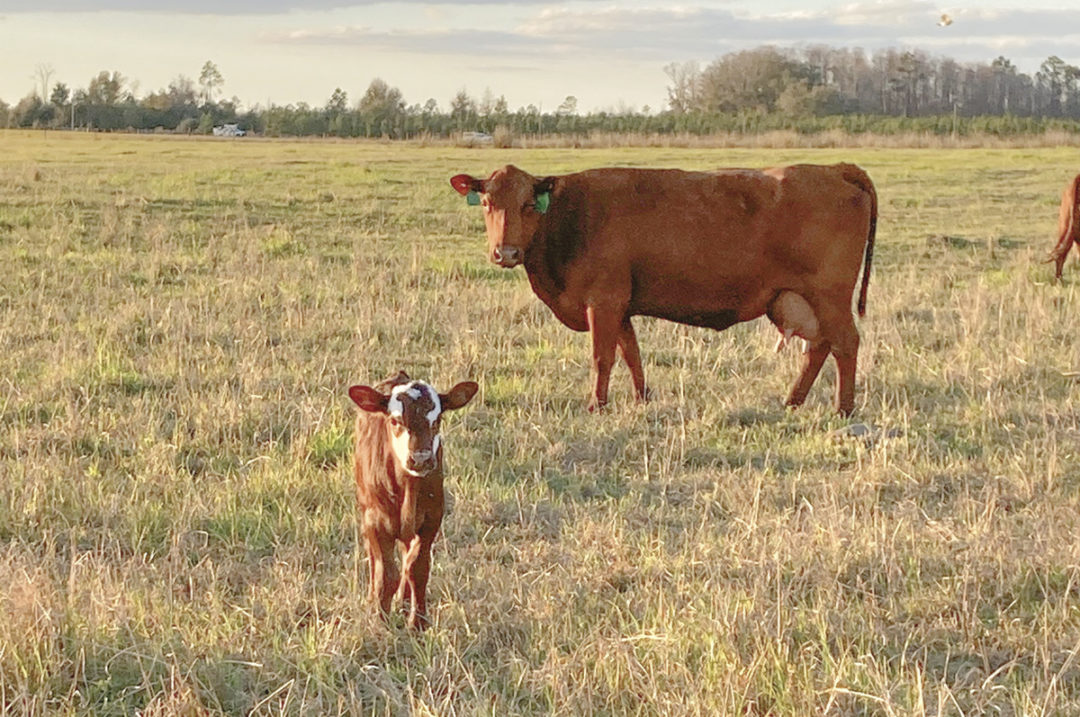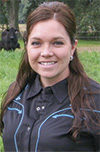In the cattle industry, our end product is essentially skeletal muscle. We raise beef, and we do it in an industry that has very defined stages of production (cow-calf, stocker, feedlot, etc.). While each of these stages are typically very independent of each other in business terms, they are very interdependent upon each other for success from stage to stage.
For example, we have a good understanding of how herd health protocols such as pre-weaning vaccinations can impact calf health while they are in the backgrounding or stocker phase. So in this article, let’s look at how fetal development of muscle fibers impact feedlot success.
From gestation to the rail, there are things that will impact the calf’s success. Genetics, environment and management are among the biggest. However, before that calf is even born, it growth potential is defined by the total number of muscle fibers that develop in utero.
Muscle fibers develop in two ways. Hyperplasia is the development of new cells, whereas hypertrophy is the growth of existing cells. Early in embryonic development, cells begin to differentiate and will commit to myogenesis (forming into muscle fibers). Once this process is completed (hyperplasia), the animal does not form any more muscle fibers or cells. After birth, the calf’s muscle fibers will grow (hypertrophy) but will not increase in numbers. We can manipulate the growth rate and size of skeletal muscles (hypertrophy); we cannot increase the number of muscle fibers (hyperplasia). In other words, calves are born with a set number of muscle fibers that will grow after birth but will not multiply.
Why is this piece of information of important for cow-calf producers?
Maternal nutrient restrictions during early to midgestation decrease the total number of myofibers (muscle fibers) in cattle. During this phase of gestation when the muscle cells are developing, the nutrition of the cow is critical. Research has shown that nutrient restrictions from day 45 to day 185 of gestation will reduce the total number of muscle cells of steers born to those cows. This was seen in cows that were fed 70% of their protein requirements versus 100%. This difference is approximately 0.48 pounds per day of protein for a 1,200-pound bred cow. Additionally, calves born with reduced number of muscle fibers tend to be smaller or lighter at all phases of production (weaning through finishing).
Skeletal muscle is a lower priority in nutrient partitioning compared with the brain, heart or other organ systems during fetal development. This means that if a dam’s nutritional requirements are not met during gestation, they will prioritize the distribution of the nutrients they are receiving to high-priority tissues like the organs – potentially resulting in fewer muscle fibers.
Timing and management
The timeline for fetal muscle development is interesting but also important information for cattlemen, especially those who are facing feed shortages and operating on tight budgets this year. Muscle fiber development occurs in two time frames during gestation:
- 0-60 days – Primary muscle fibers begin forming; however, this development is limited, thus maternal nutrition has little impact.
- 61-240 days – The majority of muscle fibers form during this time frame, with maternal nutrition greatly impacting success/hindrance of this phase of fetal growth. Deficiencies in protein supplements for the cow will result in reduced formation of muscle fibers.
- 165-285 days – Muscle fiber growth occurs (with some overlap with new fiber formation). Nutrient deficiencies during this time frame will result in lighter birthweights or decreased overall growth of the calf.
As cow-calf producers transition into fall, it is key to keep in mind the periods when nutritional requirements of gestating cows are highest. This will not only impact body condition going into calving but also but also can impact your weaning weights next year if calves are born with reduced muscle fiber development, because of maternal nutrient deficiencies. Simple management strategies like getting your hay nutrient tested to allow you plan which haystacks to feed from during different periods of nutrient requirements and sorting bred cows into age groups to allow young cows and mature cows to be fed differently can make a big difference in the long run.
At the end of the day, cow-calf producers have a critical role of managing cows during gestation. When the calves hit the ground in the spring or fall they have every muscle fiber they will ever have and that is in its entirety the whole basics of the beef industry – the development and manipulation of muscle fibers.









